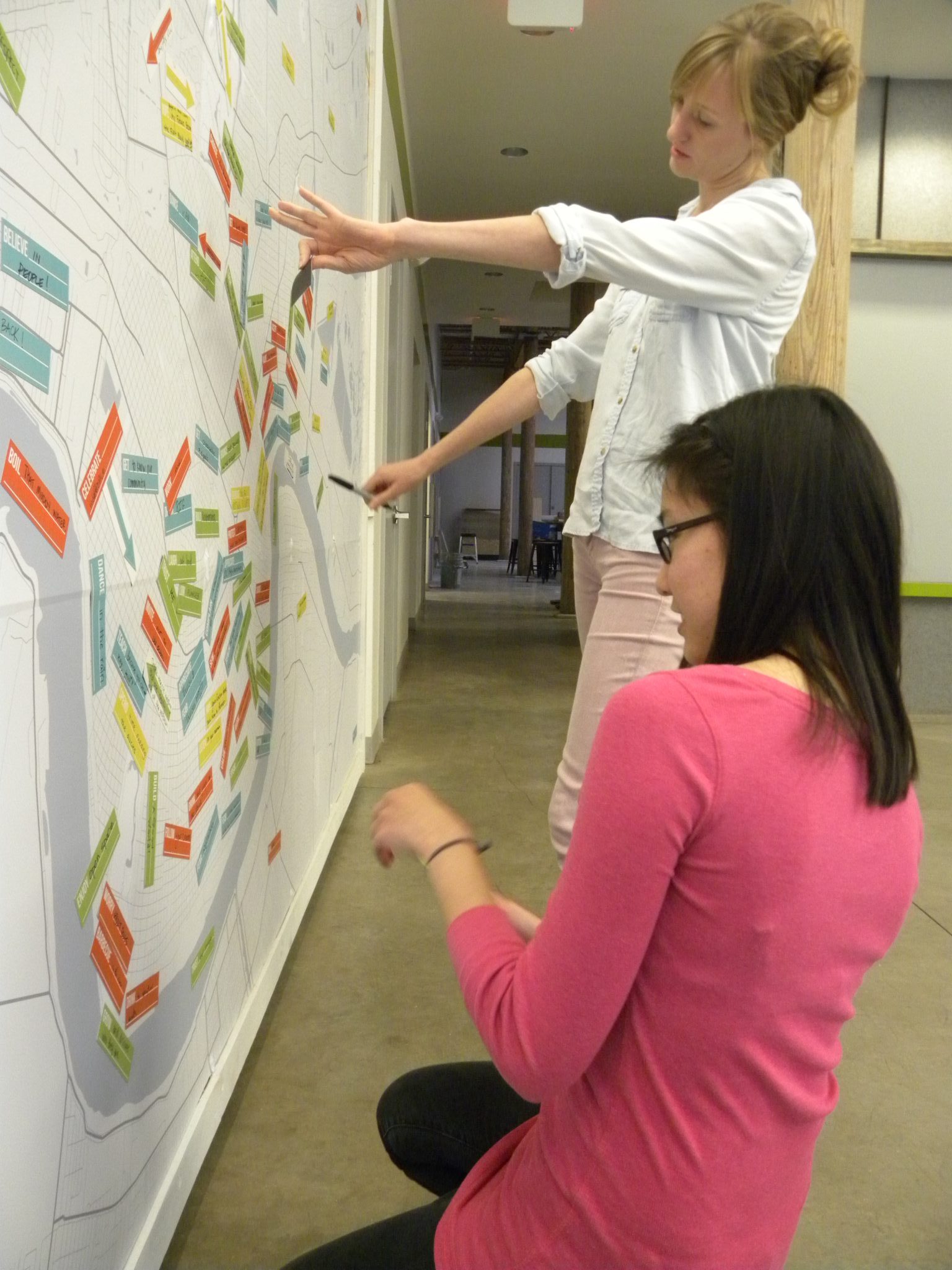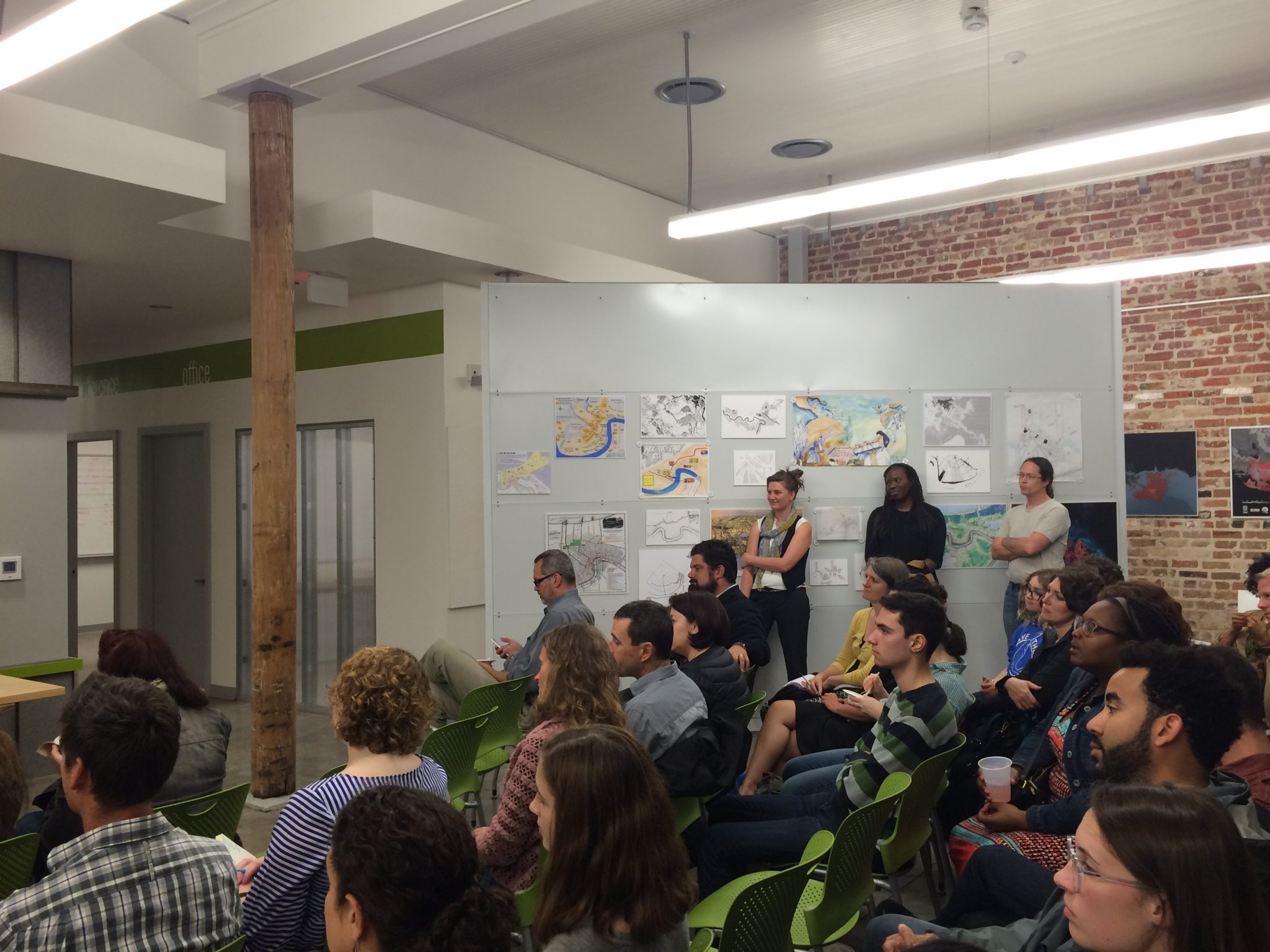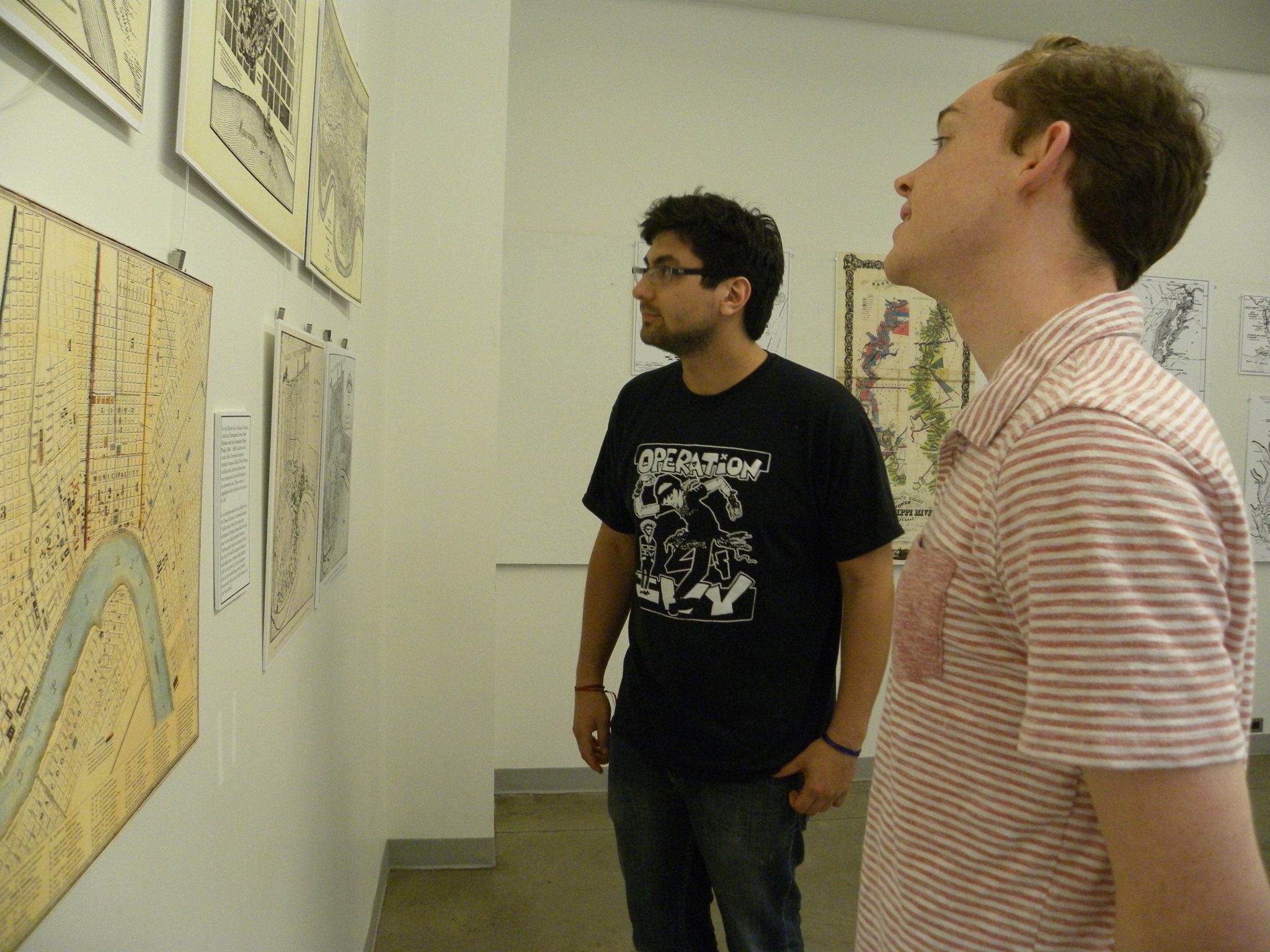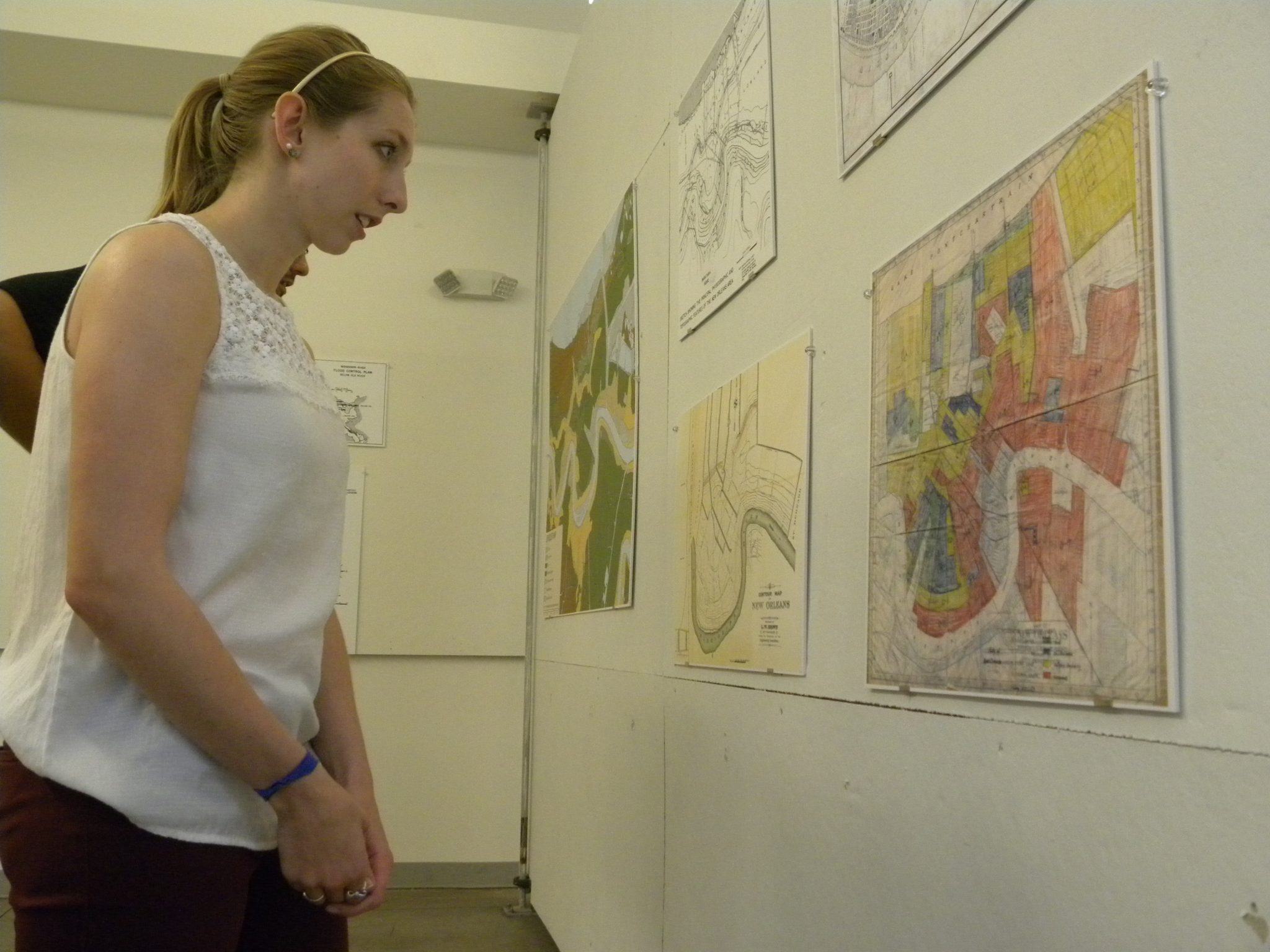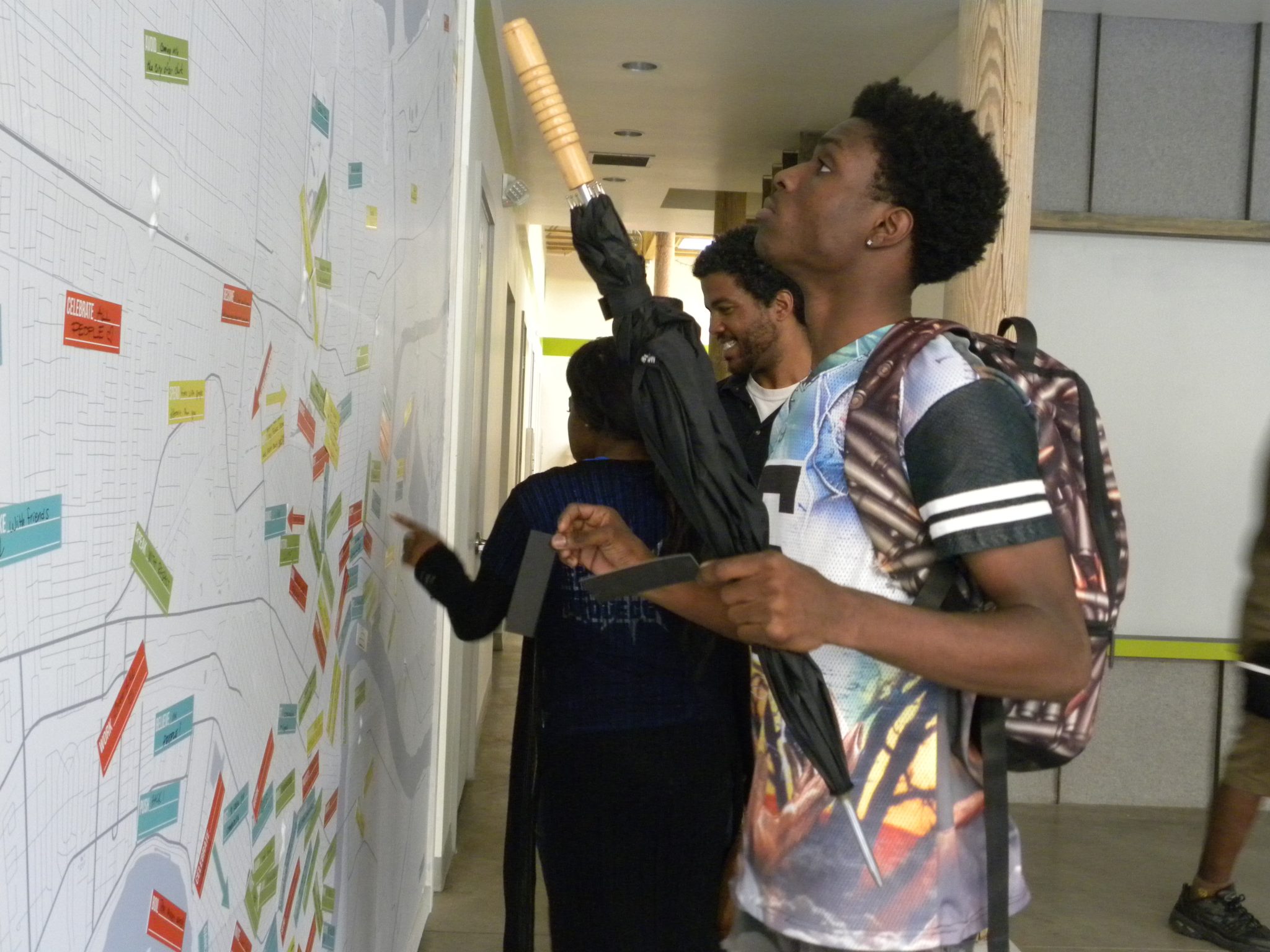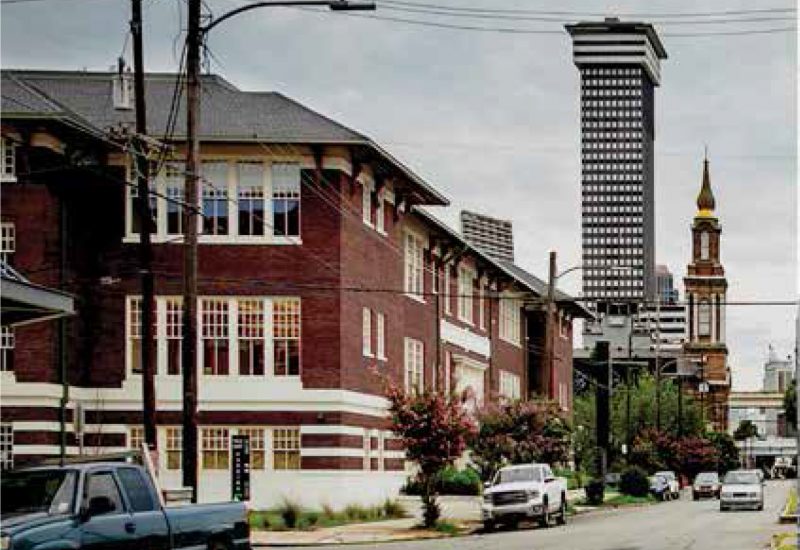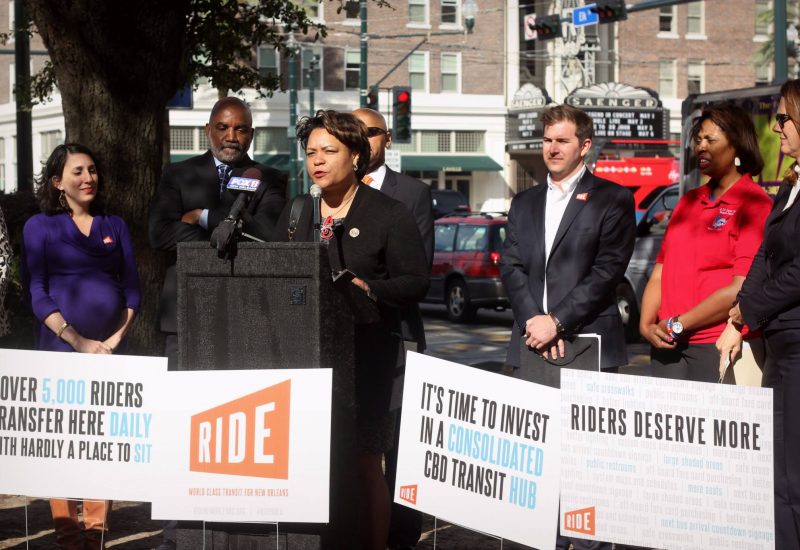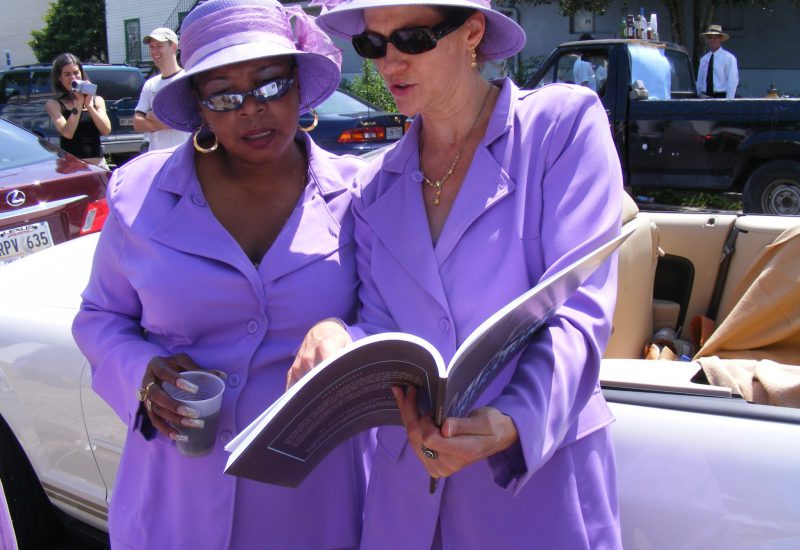Locating New Orleans: An Exploration on Shaky Ground
Through maps and mapping, the exhibit, Locating New Orleans, worked to explore how the concept of precarity impacts and influences the built, social, and physical environments of New Orleans over the past three centuries.
Project Dates
January 2016–May 2016
Context
In recent years, New Orleans has had any number of adjectives attached to it: Inevitable, Unfathomable, Accidental, but none so often, or so contested, as Resilient. Defined as the ability to bounce back from shocks and stressors, resilience is both a goal and a self-evident truth. Resilience is also an aptitude largely built through the repeated experience of adversity; a capacity grounded in precarity as much as persistence.
For nearly 300 years, New Orleans has suffered and rebounded from the challenges of its precarious natural setting. To inhabit this place we have constructed layers of systems and structures to compensate for and control the environment, the economy, and our citizens. Throughout, the city has embodied a history of choices that work to constrain future choices while often placing undue burdens on the most vulnerable.
Small Center Engagement
This exhibit drew on maps and mapping to provide a range of visual information in an exploration of precarity as the central feature of the shifting and interdependent factors within the physical, built and social environments that construct the landscapes of New Orleans. In this light, precarity is expanded historically as well as topically and complicates the construction of New Orleans as ‘resilient’ by focusing on the high costs of resilience to the city and its citizens.
Outcome
Locating New Orleans displayed maps from a variety of sources, including “People Who…”, which invited visitors to join us in the creation of a psychogeographic map of New Orleans. This map was originally made for the publication Unfathomable City, 2013. It was re-imagined for this exhibit by Jakob Rosenzweig, Sue Mobley, and Gustavo Rodas. The first two magnets, placed on the map by former Mayor Moon Landrieu and Senator Mary Landrieu, a member of the Small Center Advisory Board, identified their Broadmoor neighborhood as a place where people “dream big” and “work hard.”
In conjunction with the exhibit, Small Center hosted a series of events, including a showing of Songs of Home, Songs of Change, a cartographic audio installation piece collaboratively created by sculptor and Contemporary Art Center artist, Jebney Lewis; composer, electronic music artist, and Tulane University professor, Rick Snow; Christopher Staudinger, and a host of New Orleans high school students from Big Class, Sci Academy, The Net Charter High School, Bard Early College of New Orleans, and Lusher Charter School. The students led a public dialogue with Tulane faculty respondents about the themes of the work and about the writing and filed recordings involved in the creation process.
Collaborators
Individuals
- Jebney Lewis
- Jakob Rosenzweig
- Matt Sakakeeny
- Rebecca Snedeker
- Rich Campanella
The NET Charter School
New Orleans Center for Creative Arts
- Kate Kokontis
- Catherine Michna
Tulane School of Architecture
- Cordula Roser Gray
Team Members
Project Lead
- Sue Mobley (Curator)
Students
- Abby Bray
- Kyle Maer
- Allison Price
- Gustavo Rodas
Staff
- Maggie Hansen
- Nick Jenisch
- Donn Peabody
- Emilie Taylor Welty
Support
- Surdna Foundation


 Menu
Menu

